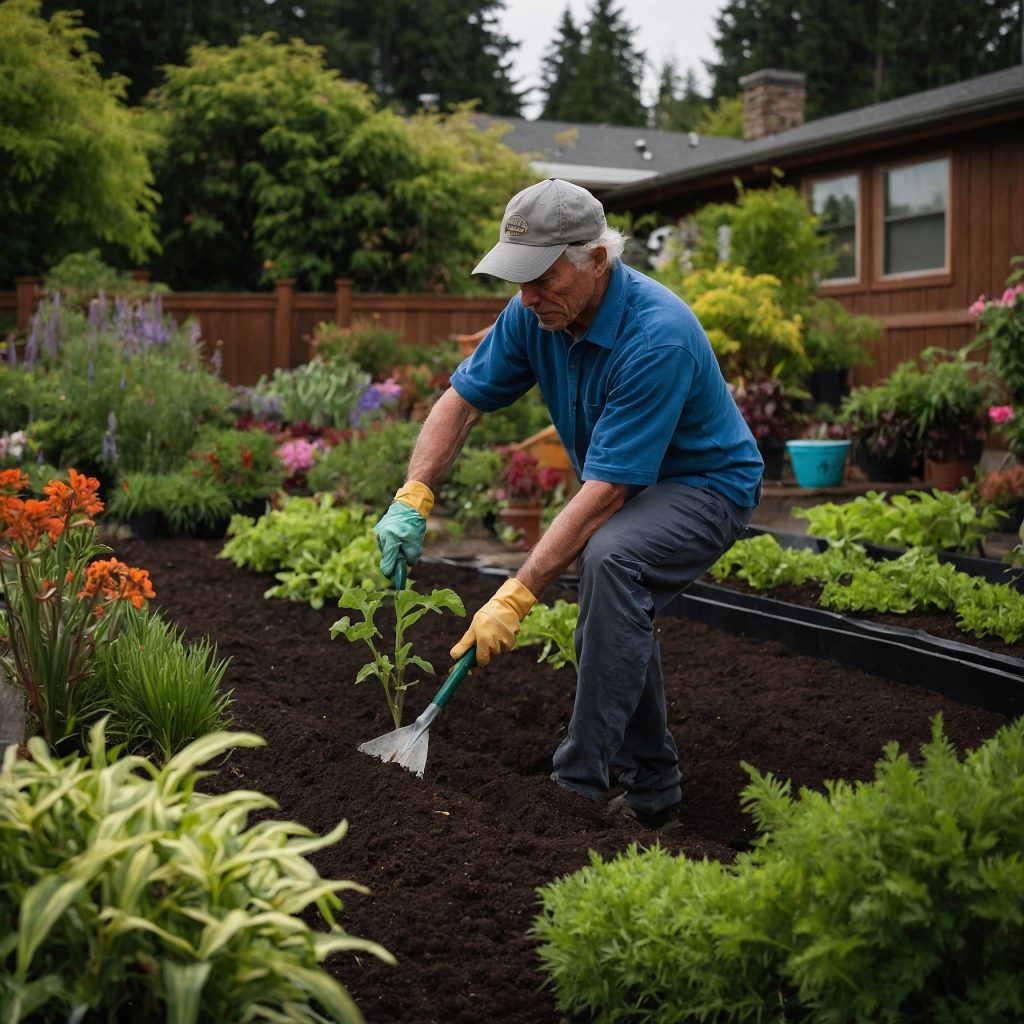Gardening Tips for Hot Summers in the Pacific Northwest
While the Pacific Northwest is known for its mild, wet climate, summers can bring periods of intense heat that can stress plants and challenge gardeners. To maintain a thriving garden during hot weather, it’s essential to adopt strategies that conserve moisture, protect plants from heat stress, and ensure optimal growing conditions. Here are some good practices for gardening during hot summers in the PNW.
- Water Wisely
Early Morning Watering: Water your garden in the early morning to minimize evaporation and allow plants to absorb moisture before the heat of the day.
Deep, Infrequent Watering: Water deeply but less frequently to encourage deep root growth. Shallow, frequent watering can lead to shallow root systems that are more vulnerable to heat stress.
Drip Irrigation and Soaker Hoses: Use drip irrigation or soaker hoses to deliver water directly to the plant roots, reducing water loss through evaporation and keeping foliage dry, which can help prevent diseases. - Mulching
Organic Mulch: Apply a thick layer of organic mulch, such as straw, wood chips, or compost, around your plants. Mulch helps retain soil moisture, regulate soil temperature, and reduce weed growth.
Reapply as Needed: Replenish mulch throughout the summer as it decomposes and compacts to ensure continued protection. - Shade and Shelter
Temporary Shade: Use shade cloths, row covers, or even old sheets to provide temporary shade for sensitive plants during the hottest part of the day. This can help prevent sunburn and reduce heat stress.
Strategic Planting: Plant taller or more heat-tolerant plants on the south or west side of more delicate plants to provide natural shade. - Soil Health
Organic Matter: Incorporate plenty of organic matter, such as compost or well-rotted manure, into your soil to improve its water-holding capacity and overall health.
Soil Cover: Keep soil covered with plants or mulch at all times to reduce evaporation and protect soil structure. - Plant Selection and Care
Heat-Tolerant Varieties: Choose plant varieties that are known to tolerate heat and drought conditions. Native plants and Mediterranean herbs like lavender, rosemary, and sage are good options.
Proper Spacing: Space plants appropriately to ensure good air circulation, which can help prevent heat-related diseases and stress.
Consistent Monitoring: Regularly check your plants for signs of heat stress, such as wilting, leaf scorch, or sunburn. Promptly address issues with additional watering, shading, or mulching. - Pest Management
Vigilant Monitoring: Hot, dry conditions can attract pests like spider mites and aphids. Regularly inspect plants and use organic pest control methods, such as insecticidal soaps or neem oil, if needed.
Beneficial Insects: Encourage beneficial insects, like ladybugs and lacewings, by planting a variety of flowers and herbs. These insects can help keep pest populations under control. - Harvest Timing
Morning Harvesting: Harvest fruits, vegetables, and herbs in the early morning when they are most hydrated and flavorful. Avoid harvesting during the heat of the day, which can cause produce to wilt quickly.
Regular Harvesting: Pick produce regularly to encourage continued production and prevent plants from becoming stressed.
Conclusion
Gardening during hot summers in the Pacific Northwest requires thoughtful planning and proactive care. By adopting wise watering practices, using mulch effectively, providing shade, maintaining soil health, selecting heat-tolerant plants, managing pests, and timing your harvests appropriately, you can keep your garden vibrant and productive even during periods of intense heat. With these strategies, you’ll be well-equipped to handle the challenges of hot weather and enjoy a flourishing garden all summer long.
Need help? Call Levy’s Lawns and Landscaping at (360) 876-6567.
